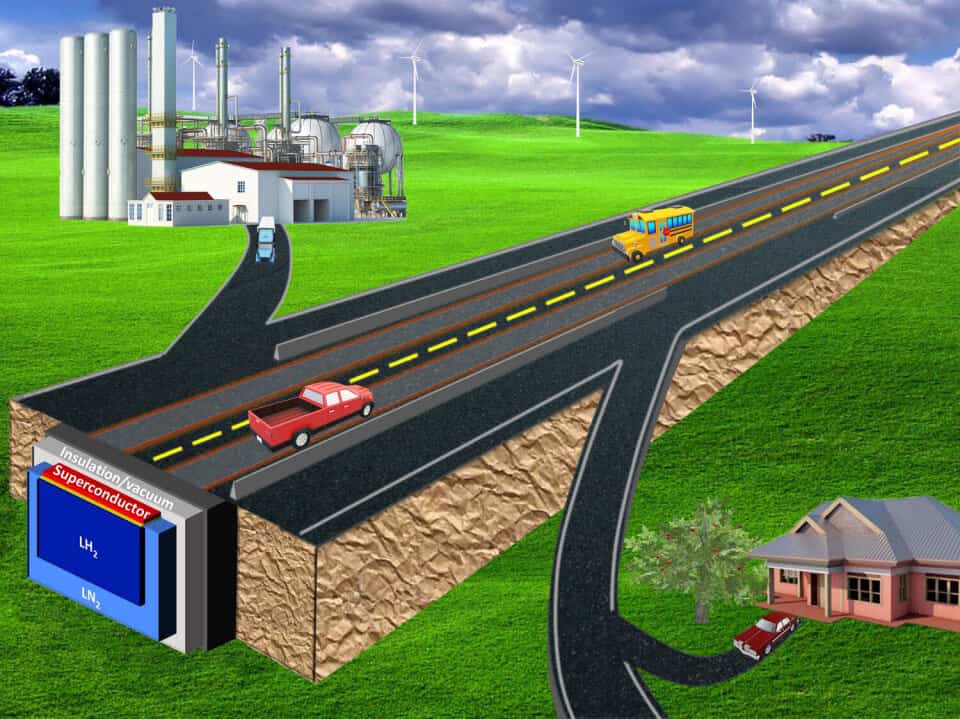
Superconductivity is an amazing phenomenon that occurs when certain materials are cooled to extremely low temperatures, allowing them to conduct electricity with no resistance. Zero. Nill.
This means that electrical current can flow through a superconductor without any energy loss, making it an incredibly efficient way to transport electricity.
This also means that you can channel this phenomenon to operate magnetically levitating trains — also known as Maglev trains — that essentially float on top of the rail, enabling perfectly frictionless locomotion except for air resistance.
Maglev trains currently in operation use oppositely charged massive magnets and can easily travel at hundreds of kilometers per hour. South Korean scientists recently demonstrated a working Maglev prototype that can zip through the air at a staggering 1,000 kilometers per hour.
But if superconductivity is so great, why hasn’t everyone heard about it? Where are all the superconducting power lines and floating trains?
The reason why these promising technologies haven’t left research labs is due to the prohibitive cost of operating infrastructure that requires cooling the underlying materials to hundreds of degrees Celsius below zero.
However, in a new study, researchers believe they have found a hack that could allow superconductivity to sneak into the mainstream. They envision a system that would transport people, cargo, and energy in a single superconductive highway.
Well, imagine a future in which air travel and traditional freight transport become obsolete, replaced by a “super system” allowing personal and commercial vehicles to travel at speeds up to 640 kilometers an hour—maybe even twice that fast. At this speed, you’d be able to travel from Houston to Los Angeles, or Houston to New York in just a few hours.
Zhifeng Ren, director of the Texas Center for Superconductivity at the University of Houston and a corresponding author on the paper, calls it nothing less than “world-changing technology.”
Chasing the superconductive dream
A normal conductor has electrical resistance because electrons moving through the lattice also bump into the conductor’s atoms, slowing them down in the process. This motion also causes atoms in the conductor to vibrate, which is why electrical resistivity also leads to heat loss.
On the other hand, in a superconductor, the lattice is so rigid due to the low temperature that mechanical sound waves carried by phonons ripple through it — and electrons ride the wave along with them.
Electrons in a superconductor form bonds called ‘Cooper pairs’ which flow through the material like a fluid. When the temperature rises, the Cooper pairs break apart and the delicate superconductive state dissolves.
Scientists have known about superconductivity since 1911 when Dutch physicist Heike Kamerlingh Onnes accidentally discovered the phenomenon while chilling mercury to -269°C, just four degrees above absolute zero.
However, the modern era of superconductivity research began in 1987, when a team led by University of Houston physicist Paul Chu discovered a compound that acted as a superconductor at a temperature above the boiling point of liquid nitrogen. Since then, subsequent research has shown that superconductors can be used to power magnetically levitated trains and to transmit electrical power without energy loss, reducing waste — or at least in theory.
Now, researchers from Houston and Germany have found figured out a way to make superconductor applications financially feasible. The idea is to embed superconductors into existing highway infrastructure and add magnets to the undercarriages of vehicles, avoiding the need to cool a superconducting material on each vehicle.
Most crucially, the superconducting highway would be cooled by liquified hydrogen as it moves across the system through pipes, with liquified nitrogen and a vacuum layer used to thermally insulate the liquified hydrogen. Once it arrives at its destination, the liquified hydrogen can be turned into gas to power clean energy applications.
Each of these applications — transporting people and cargo, transmitting electricity, and funneling liquid hydrogen over great distances — is prohibitively expensive on its own using superconductivity. But by combining all of them into a single package, the costs are dramatically offset and could make economic sense in the long run.
People will be able to travel at their own convenience while enjoying the time-saving benefits of high-speed trains and air travel. Fuel or electrical power consumption will drop dramatically while the car or truck is on the superconductor guideway, reducing both the cost and the environmental footprint.
Technical details remain to be resolved, said Ren, “but the learning curve should not be steep since we have learned a lot during the past 40 years or so.”
If this super system becomes a reality, it would mean that air travel and traditional freight transport could become obsolete, replaced by a faster, cheaper, and more efficient mode of transportation. Personal and commercial vehicles could travel at speeds of up to 400 miles an hour, or even faster.
To demonstrate the technical aspects of this concept, researchers built a model to show the levitation of a magnet above a superconductor guideway, with liquefied nitrogen used to cool the superconductors in the model. Future models will use hydrogen instead.
According to Ren, “superconductivity has had such promise to transmit electric power without power loss, to power magnetically levitating, super-fast trains and for energy storage. But it has not been economically viable, which is why it hasn’t happened at large scale yet.”
But Ren believes that this proposed super system could be a real game changer, adding that “all those benefits together, I think it could change the world.”
The findings appeared in the journal APL Energy.
Was this helpful?



